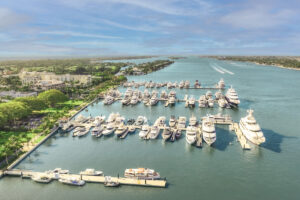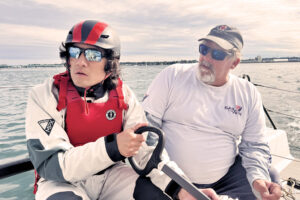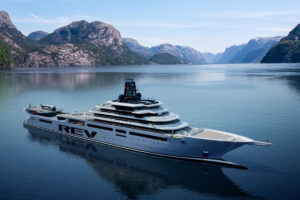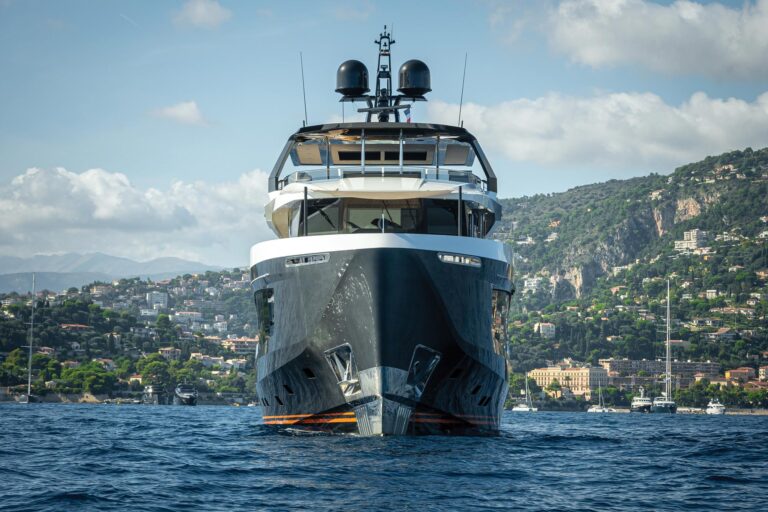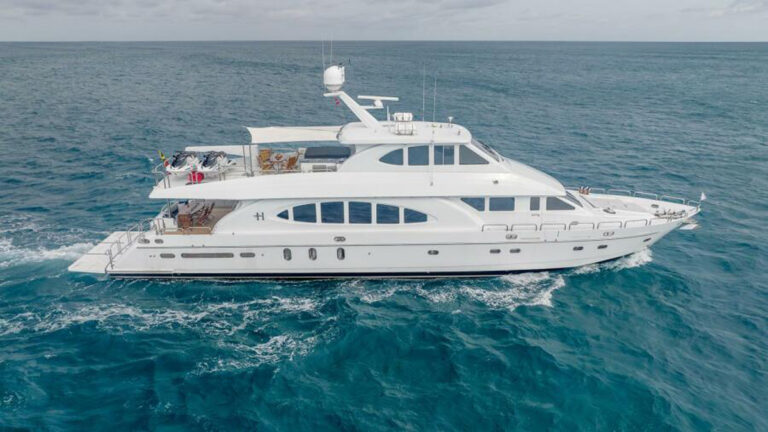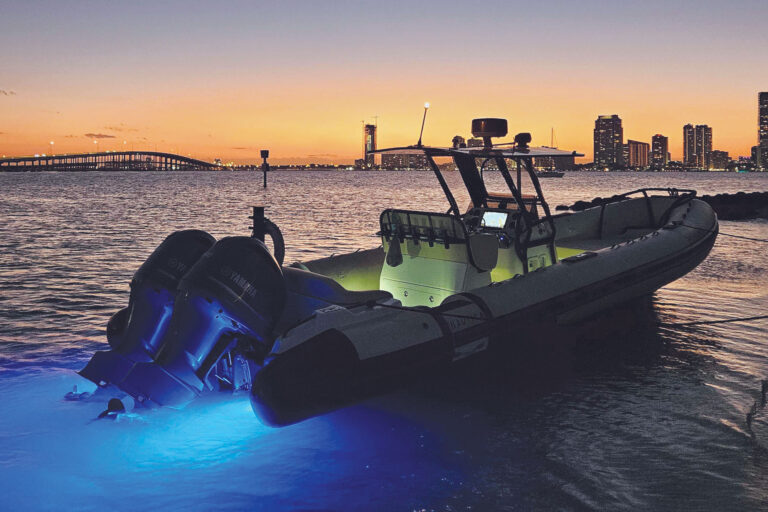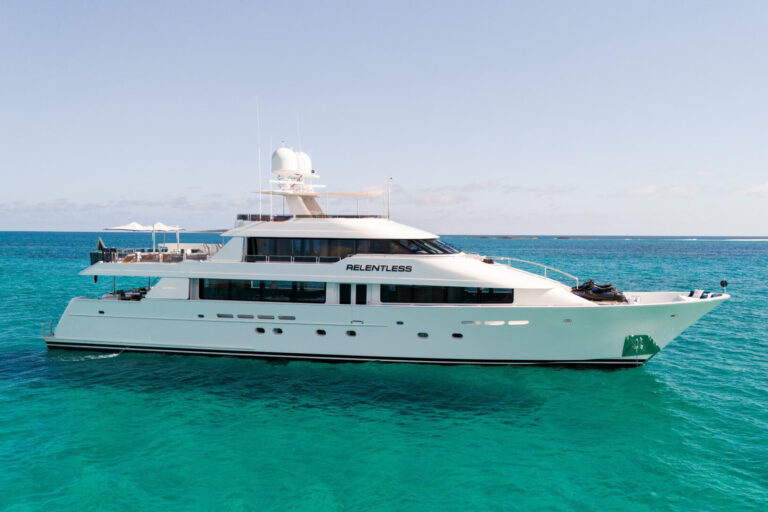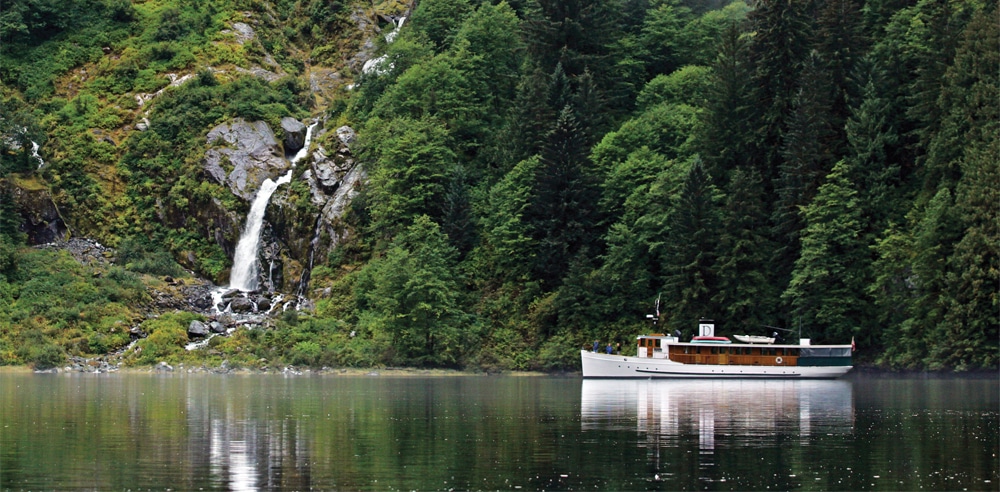
Delivering Discovery
My wife and I had come to Ketchikan, Alaska, to meet up with Capt. Ben Swanson, skipper of the motoryacht Discovery, who runs charters in the wilds of southeast Alaska all summer. He had invited us to join his merry band of crew and friends on his return delivery to Seattle, a cruise of eight or nine or 10 days that would show us some spectacular scenery, he said, and also let us enjoy the charms of his 87-foot fantail motoryacht.
Ketchikan has that frontier feel to it, making it a great starting point. The town’s waterfront is a burly mix of work boats, intrepid cruisers and cruise ships. The cruise ships, huge cities afloat, propel thousands of eyeballs each summer past the natural beauty of the area while simultaneously being the largest blight upon it. Seemingly moon-size satellite receivers perch atop the ships’ clifflike sides, betraying the amount of television viewing taking place on each of their innumerable decks.
We motored away from Ketchikan and the cruiseship docks as fog obscured the views and the rain seemed to drive down harder. No matter, we were able to turn our attention to Discovery. The Callas-designed fantail motoryacht was built in 1931 as Holiday for William Morris, the vaunted talent agent. Her teak house has mahogany paneling throughout and large windows in both the salon and dining room, making her well suited to enjoying the vistas awaiting us on our cruise. Teak decks along each side are under cover, and the afterdeck is enclosed with curtains, all the better to relish the great outdoors.
Belowdecks are four double cabins, a single and a cabin with two double berths. Two shared heads, one with a shower, and an additional, separate shower compartment round out the facilities. Our stateroom was comfortable and clean, if unassuming, and at night, generally the only time we spent belowdecks, we slept well. Soft breezes wafted through the porthole we opened while we swung gently at anchor. Some nights we retired before Swanson had decided to stop for the evening, the thrum of Discovery’s engine and sound of water passing by lulling us to sleep in no time.
Swanson was on a schedule for this delivery, and he wanted to be back in Seattle by Saturday. But he also wanted to show us this part of the world. The beauty of a boat like Discovery lies in the fact that she has her limitations, cruising at nine knots and topping out at 12. In some narrow passages on our route, we would face strong currents, and local knowledge was key to making this trip work. Or rather, making this trip not seem like work, but fun.
And the fun began quickly, as that driving rain begat a piping wind and a fair-size swell. Suddenly we were in nine-footers and listening to crashes from the galley, followed by a sheepish chef Ryan Wheeler coming to the dining-room door to report: “It sounds a lot worse than it is.” The sporty seas continued to get more uncomfortable — this was one of only two legs of our trip exposed to the open Pacific, and we were trying to cover more than 80 miles that first day. Finally Discovery turned into an inlet and things leveled out.
Just as I noticed I was famished, Wheeler appeared with a delightful turkey sandwich with mayo and coarse-grain mustard on multigrain bread. Exactly what the doctor ordered. And as seas calmed down the next day and indeed for the rest of the trip, this was how it went. The most delightful things to eat came out of that galley, always a timely complement to the cool weather of late summer in the Inside Passage. A late-afternoon snack each day meant Asian-inflected chicken wings, or stuffed mushroom caps. First mate Susi Zimmermann would grin warmly at my why not? response to her proffered bottle of cabernet. Dinner brought hearty soups, fresh-baked bread (every day!), entrees like a succulent roast pork accompanied by such dishes as a mushroom orzo to knock your socks off, and fresh pea pods or broccoli cooked to toothsome perfection. Breakfast was fresh muffins or scones, pancakes or eggs.
These were just the selections Wheeler whipped up from his stores. When Swanson would put out the crab and shrimp pots at the entrance to an inlet where we were stopping for the night, or one of us would catch a salmon, the options opened up quite a bit.
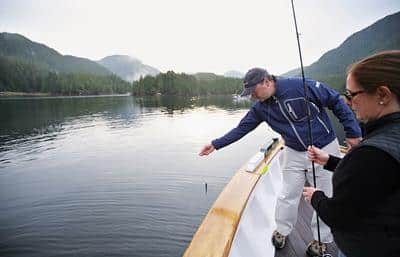
The sea was kind to us in other ways as well. Though she calmed considerably after the first day, she and Swanson contrived to show us how wild things still are in that northern ecosystem. The banks of the passage are generally steeply sloping rock faces covered with a thin layer of topsoil. Coniferous trees stand clinging to the rock and soil, often from the water’s edge right up into the low-hanging clouds. In one anchorage I noticed a ridge in the distance that looked like the edge of a saw blade, draped in clouds reminiscent of cotton batting that were soon carried off by a shifting breeze. Those steep slopes continued below the surface of the water at the same angle. You could be just 80 feet off a shoreline in 300 feet of water.
Swanson gets a lot out of these waters for two reasons. First, he has spent plenty of time here, doing these charters with his father since he was very young (though he’s in only his late 30s now), so he knows his way around — a cruising guide of anchorages in his head, replete with notes on where to drop the hook and what he’s seen there. Second, he understands that nature can be coy. You can look at waterfalls and beautiful foggy, moody scenes all day long. But if you don’t get the whales or bears or something big and breathing, you’re missing out on a large part of it. So when he sees something good — and he’s always looking — he just stops the boat. The timetable is secondary.
We soon became attuned to this life aboard. As Discovery cruised along, you could be midsentence … and at the slightest change in rpm everyone would head for the deck. It could be a fishing boat crossing our course at an ill-advised angle. But mostly it was some spectacular natural show, such as a pod of orcas gamboling in a playful mood or humpback whales feeding together. Jeremy Cole, an old friend of Swanson’s, and Zimmermann’s father, Volker, were along for the delivery too, and we would all drop whatever we had been doing — reading, eating, watching the scenery — and congregate on the bow to see these amazing creatures. I’ve never seen wildlife so inclined to interact with people, and the orcas could stick around for more than an hour. On one occasion, a small killer whale charged the boat only to submerge at the last moment, inverting as it passed beneath us, its white belly showing electric blue through the surface.
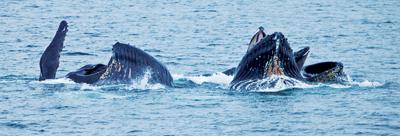
“You don’t know if this is all you’re going to see,” Swanson said of the whale stops. “This could be it. So we make it count when we see them. We may make only 20 miles in a day, but if the guests see what they came to see, that’s all right with me.” When you realize that Swanson can decide whether he wants to press on through the night and eat at the wheel to make up for lost time, you understand he controls the experience.
We stopped in secluded anchorages nearly every evening. If we had daylight left, Swanson would launch one of the Whalers to scout around. We would motor up a river or explore a bight off the inlet, looking for bears, seals or other wildlife. I’d never seen so many bald eagles in one place. Swanson comes off as an insistent adventurer, but it’s because he knows the area and knows what you could see, if you waited a bit longer or just kept going beyond the next bend. And even if you don’t see something on a jaunt in the skiff, he keeps it interesting. His hearty ho ho ho punctuates the thousands of stories he has in reserve, if you can draw them out of him.
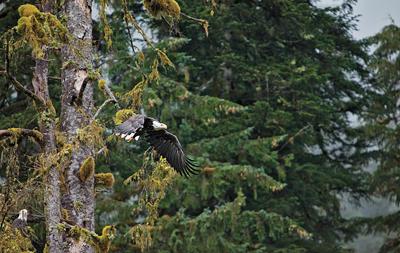
But as I said, we’re on a schedule and Swanson is the keeper of the charts, the route and the throttle. That first day had 80 miles on the plan and we had knocked off only about 20, so we figured we’d be playing catch-up the whole way down the coast.
We didn’t. Swanson and his crew were dedicated to our enjoyment, stopping in towns like Prince Rupert, Shearwater and Ganges Harbor, but the anchorages in between were unforgettable. As we entered an inlet, we saw a strip of white descending the rock face, between the trees, down out of the fog. As we got closer we could see farther up the slope: a waterfall growing in width and height, its starting point still higher up the hill. And sure enough, we pulled the bow in close and dropped the hook for the night, right before this perfect view. Zimmermann would helpfully point out local fauna, such as a seal peering at us from the surface, smooth head and huge black eyes, nostrils pinching closed as it submerged.
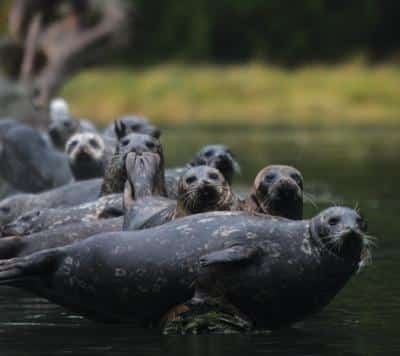
As we got closer to Seattle and re-entered U.S. territorial waters and, more importantly, nonroaming cell-phone range, it became apparent that our voyage was drawing to a close and the pressing schedules of our lives’ day-to-day routines were beginning to creep in at the edges. And as we motored down Puget Sound, I was happy to be headed home, but sad to be leaving the quiet and unspoiled wilderness in my wake.
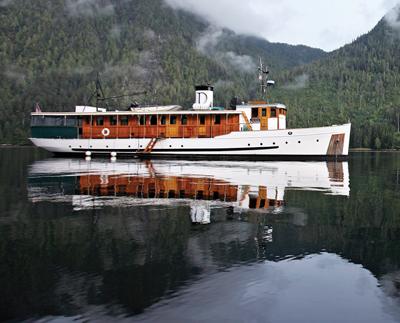
A Voyage of Discovery
Choose the charter that’s right for you.
Discovery is a classic motoryacht that gets her guests close to nature. Swanson suggested at dinner one evening that it’s a certain type of guest who will appreciate the full experience he offers. He generally speaks to everyone who’s coming, to answer any questions, but certainly anyone with an appreciation for classic yachts and stunning scenery is bound to get a kick out of this experience. The trips from Ketchikan and Juneau must be remarkable.
When Discovery came through the locks into lake union, an appreciative crowd gawked and took pictures of our classic ride — which let us experience what the wildlife must have felt when we were snapping away. Swanson charters Discovery to groups of up to 10 passengers, but a group of six passengers can book the whole boat for a seven-night trip for $24,500. A 10-passenger charter for seven nights is $32,500. Call 800-767-1024 or visit www.alaskacharters.com.

